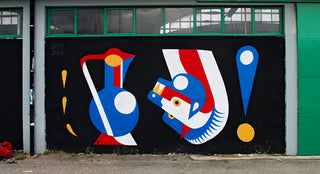In my journey of discovering more implications about graffiti culture and how it functions in our society, I stumbled upon this revelation: It’s common for trainwriters to become tattoo artists. I have a feeling that most of them follow this path to support their lifestyle or perhaps simply because it’s the best way to keep drawing.
To get answers, I caught up with FONT. He is a well-known tattoo artist with a particular style that began when he first started bombing trains in the early 2000s. After the right amount of time and work, he was able to transfer his skills from metal surfaces to skin. Find out how he succeeded in developing his style, and what he feels is the best approach to becoming a tattoo artist.
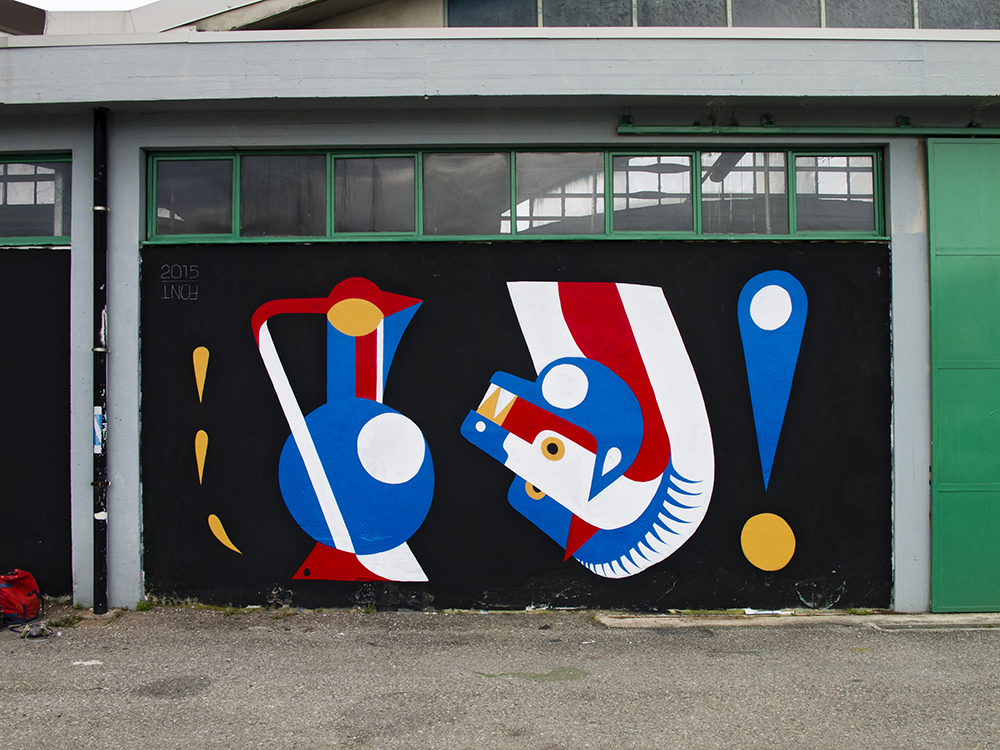
SPRAYTRAINS: How much study and research is behind your style?
FONT: I wouldn’t call it research because it’s more of an experimental process in the sense that I hold very little to what is the tattoo culture. It’s not about study, research, and application of the rules or the evolution of certain styles. I just try to throw the things I like, that typically comes from other places, in what I do. Some inspirations come from graphics, posters, contemporary, and modern paintings… I use in my public portfolio only the stuff that I feel is mine. You have to keep in mind that I still work with the public and it is a job. And, like all jobs, you do them to get paid. So, in my opinion, some people tattooers should be a little less ego-centric. I say should because there are many artists who refuse to do what is not their style. To me, this is wrong, and from the business point of view is not particularly farsighted. At the end of the day, many times what is called “my style “is actually, in reality, the style that belong to the current trend. Everything is always relative.
So how would you define your style?
Difficult question! The right thing I can say is that I do graphics. About my style… well, it’s not realistic, it’s not volumetric, and if it is, it is still with flat backgrounds, never with the volumes. I use geometry I don’t do geometric tattoos or geometric works, more so I work with geometric shapes. I rely a lot on the circles, the squares, and rectangles. I start with the basic and elementary forms and then I develop from there.
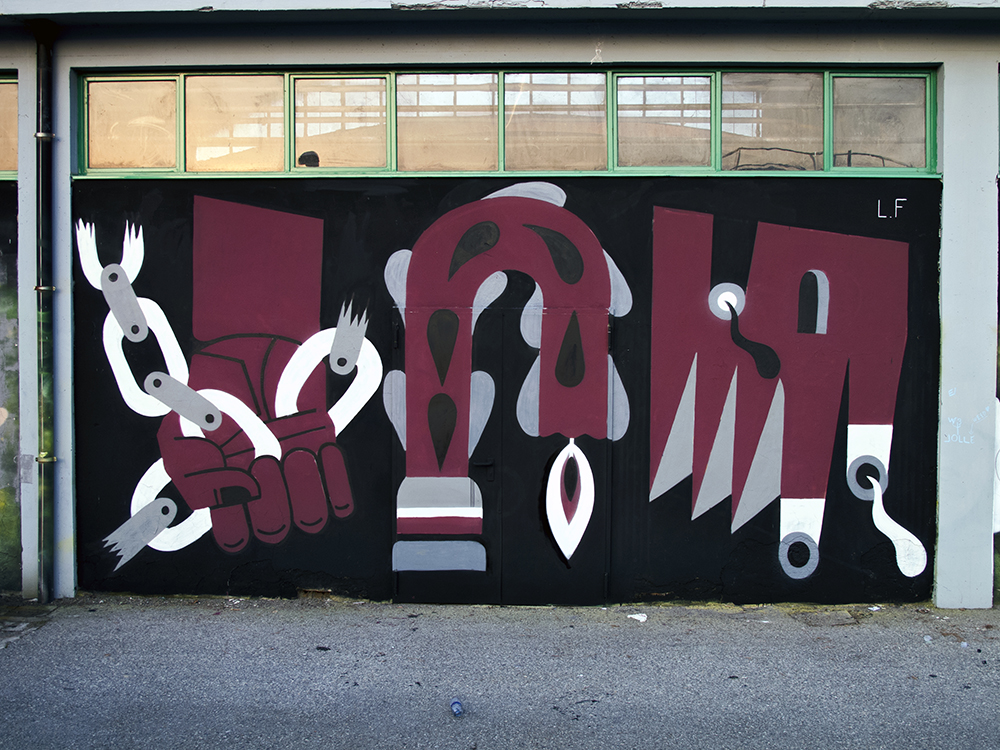
“I START WITH THE BASIC AND ELEMENTARY FORMS AND THEN I DEVELOP FROM THERE.”
The transition from spray cans to tattoo machines—how’d that happen? Was it something you really thought about doing?
No. In reality, when I started tattooing, it was during a period in which I didn’t paint that much. I began to work in Milan in an advertising agency, so I painted much less than before, so they aren’t really linked. I wasn’t planning to be an artist full-time, so I was looking for a way to keep me on this road. I started to get tattoos and I was interested in tattoo culture, but I have always seen tattoo culture and graffiti culture as two very separate things.
Tattoo culture has its canons, its styles, its rules. In fact, from the moment I started just tattooing, it was a little hard to draw graffiti because, as I said before—to me—they were on two completely different tracks. It’s only in the last couple of years that I started to make them converge. A few years ago, to do graffiti meant to do a certain type of lettering and to tattoo meant to stick more to the old school style and make paintings using ink and shades. Now, I’m pretty much doing the same thing, regardless of the media. So I’m painting with acrylics and using exclusively flat colors on canvas, and doing figurative letters. More precisely, I use big flat symbols with flat backgrounds on the walls and I use little to no shading on the tattoos I do.
So, from being two things on two different tracks, I tried to turn them into a coherent process. That obviously requires an evolution in terms of style because different mediums have very different needs.
What advice would you give to writers that would like to start a career as a tattoo artist?
To not feel ready and prepared just because you have been drawing a lot. Because it is a different medium, and this means that you still have to start from scratch because, for better or for worse, being able to draw on paper is fine but there are so many things that you have to learn. And it is best at the beginning to work closely with someone able to teach you those things and save time. There are things that you can learn and master in a week if somebody guides you that, if done alone, may take you a much longer time to acquire. And it’s better not to waste time or you will look back at your works and... [laughs].
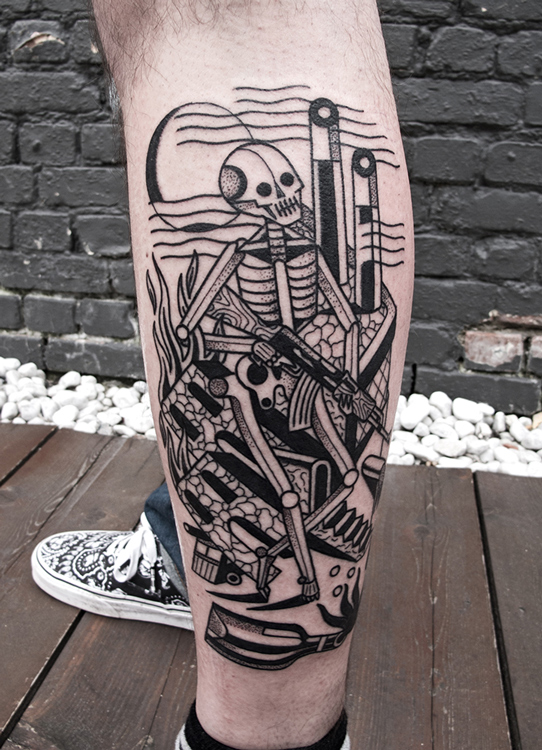
Tell us when you started to do graffiti and what you wrote.
I’ve always drawn in my life and I began to do graffiti in ’94 and ’95. I was 15 years old and lived in Bergamo, my home town where I lived until last year. My interest towards graffiti arrived on the long wave of the skate culture. In junior high, I started to skate, then I approached the worlds of alternative subcultures. Specifically skateboarding and music that then brought graffiti and rap. The first pieces I made were naïve compared to what was seen in the Milan scene [during] the same period. Being in Bergamo, a smaller city with a different reality, has made a difference because, for me, and whoever else that began to draw in those years, it meant that we didn’t know exactly what we were doing. We didn’t know some aspects of the culture, like how to use loops and arrows, while RAE was already mastering his pieces. He began to make graffiti at 11 years old and he was more informed of the graffiti culture; but at the same time a lot more started to circulate around. At fifteen, I wrote CHICO—but that was just one of the names. I always wrote a thousand different names. I know this kinda breaks the rule of, “Pick a name and write it everywhere you can.” But writing something different each time allowed me to break the pattern in which you slip and end up drawing always the same stuff.
When did you move on to painting trains?
Almost immediately, me and my friends discovered the Yard. We were among the first that went inside and eventually we made it our place. Until the 2000s it was unknown, except for a few forays of the Milan writers. We went very regularly, once or twice a week at least. For the following 10 years I did almost only panels on trains. I never did much bombing or tag in the city, just a little at first but I was never really interested in them.
Did you and your crew go around to try different places and yards?
Always. The desire to draw pushed us to go into different yards and discover as much as possible of new places. On the weekends, we moved often but always tried to manage and balance how much we painted so [we could] keep good places. In fact, our train yard has lasted a thousand times longer compared to many others in Milan.
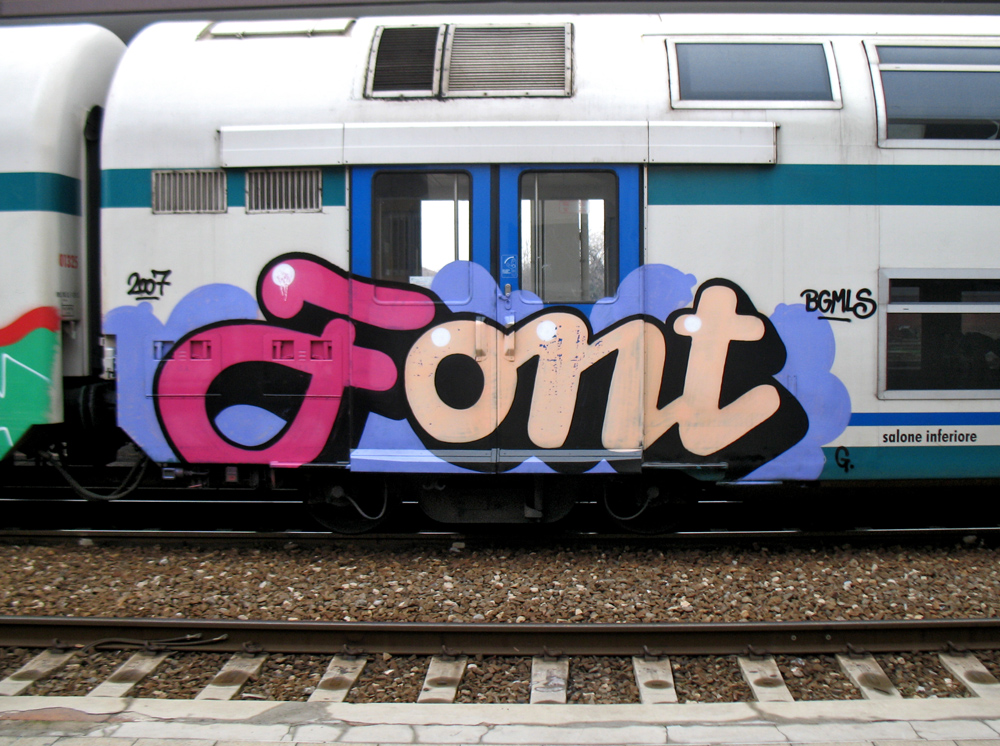
Let’s talk about BGM. How important is it for you to be part of a crew and how important is it to be linked to a territory?
I am part of the BergaMasterz and about the importance of being part of a crew... it’s in between yes and no, in the sense that to me, the people are the most important aspect; these are the same people I grew up with and went around with, even before doing graffiti together. They ain’t no strangers. I am not like some writers that are in a crew with people they barely know or don’t know at all. For me, this is an important aspect because these people are not only writers, they are people that I’ve shared something with outside of writing. But specifically, for me to paint with the crew, [it] has a relative importance because we have never done super organized productions, because we have very different styles. So even when we were going writing together, each one of us did his [own] panel and for quite some years, I often painted alone. The boys inside my crew are Verbo, Hemo, and also Once and Lazy, two guys that don’t paint anymore but are my close friends since school days.
Urban Exploring is a term that you often use on your site to describe your works on walls. How important is exploring new places and leaving your mark?
It’s something I like to do and for which I cut out time. I like to be sitting here on this bench in the park and thinking that, in West London, there is a beautiful piece of wall made by me. Since I am always working at the drawing board, most of my time is spent on requests from clients, so having the opportunity to go and paint is a moment of absolute “messing around” and freedom. It’s just plain fun for me! So I like to think that I go out to do stuff that may be right or wrong, but when I finish, I say voilà and I had fun doing it.
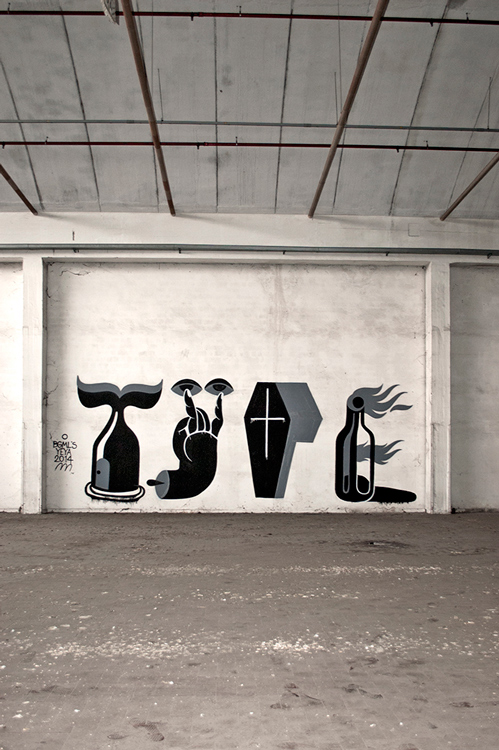
How did you end up owning the nickname FONT?
It happened because I stopped doing what I was doing. I arrived in a dead end in terms of style and wanted to do something completely different and, as I said before, for me to do something completely different requires a different name because it frees you from the style you used ’til then.
The idea of making pieces completely graphically captivated me, even though my stuff from before was also more graphic-leaning—but more on the wild side. So with the intention of making pieces completely with graphics, I got the idea of using typefaces to write the name. So the thing that seemed most logical was to write “FONT” with font typefaces. I don’t write it much anymore because those letters have fixed ratios and I got stuck on them. But the nickname remained with me and it’s part of my character.
You are very active on social media. Is that something that came naturally or did you learn to exploit it?
I have learned to exploit it and use it for the commercial aspect of my work. Also, because being a tattoo artist means having to deal with customers who don’t come by themselves. You need to build a name for yourself first. Having a portfolio of your works in your studio is a good idea, but nowadays it’s a must to be able to reach potential customers everywhere. Especially now, since we are always connected and we can go everywhere without ever leaving the house or switching on the computer. We are getting used to doing everything with our phones.
So it seemed the smartest thing to propose what interested me and propose it on social channels like my Instagram account. I choose what to post, I select my works, and I can reach more people that will come to me and ask to have something tattooed.

What do you do to keep your mind fresh?
Most of the time it’s a random process in the way that I look at things, that lead me to [new] things, that lead me to others and I find in them interesting ideas. Ideas and inspirations come from different places. I find [it] refreshing for my mind to travel. Because I get in contact with different cultural and visual stimuli.
Other ways of inspiration come from design and architecture. That’s all; in the end, they are all things that I find interesting, and when I see something that I like, I put it aside or I store it in my mind so when I have to do something I’m going to think of that.
What’s one trainwriting action that was unforgettable?
I will say the ones when you hear gunshots and you start running really fast. It’s a scene that goes like this—basically, cops shoot to avoid the fact that they have to run after you. Generally, the first one is a warning shot. It’s all psychological so that if I shoot, you stop… I never stopped. I chose to run.
::
Follow FONT on Instagram @lucafont, email him at info@lucafont.com for booking info. Visit his website at lucafont.com.

